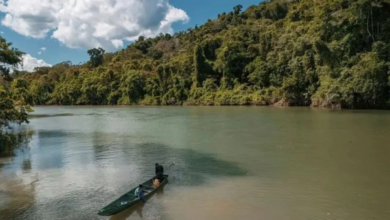What should Colombia do to achieve the Paris Agreement?
The coffee country must reduce greenhouse gas emissions up to 30% by 2030, otherwise the environmental target will not be met

The Comprehensive Climate Change Management Plan to fulfill with the Paris Agreement establishes a series of measures that must be complied within the years to come as the most rational use of fuels and electricity. According to the projection of the percentage of reduction, at least 30% of greenhouse gas emissions (GHG) must be decreased.
While in Colombia already exist government and private actions to motivate these changes, there must be greater interest from the State. The governmental interest has to be related to stricter norms promulgated by environmental institutions in order to achieve the required energy change. Also, government should promote scientific investigation to find alternatives and solutions to reduce green gas emissions. For example, a series of experts attached to the National University provided the Ministry of Mines and Energy a roadmap with a series of strategies to reduce GHG emissions.
Two factors that have directly influenced the increase in GHG emissions should be considered. First, it must be taken IGNORE INTO account the population growth and its rate of vehicles per inhabitant. Second, Colombia is a country that exports energy minerals such as coal and coke, as well as petroleum, whose extraction process is highly harmful to the environment.
National University’s road map
The University proposes different strategies which could help to achieve Paris Agreement’s requirements.
The road map that the National University (Universidad Nacional) delivered to the Ministry of Mines and Energy consists of 4 fundamental elements. These factors are: use of renewable energies, demand management, fugitive emissions, and generation of electrical power and efficient energy management.
In general terms, the use of renewable energies means that wind and solar energy sources must be promoted. Professor Sandra Téllez, from the Department of Electrical and Electronic Engineering at the National University, explains that “one of the possible alternatives is to encourage the use of renewable energy sources, such as solar and wind power, and also that users have batteries that can be recharged during off-peak hours and then used in the early hours of the night”.
Regarding the issue of demand management, there is a need to reduce the peaks in daily consumption. The diminishment can be motivated by the displacement of energy consumption hours. This could be done through the establishment of differential tariffs whose value would increase in the so-called hours.
Fugitive emissions specify that, as oil and gas production processes generate emissions that reach the atmosphere, it is essential to carry out a series of technical processes that contribute to reducing pollution levels, which could even be reused.
In the area of electricity power generation, the proposal promotes the insertion of less polluting sources in the electricity market, such as wind or solar power, as well as the use of biofuels such as sugar cane.
LatinAmerican Psot | Juan Felipe Guerrero
Copy edited by Marcela Peñaloza





